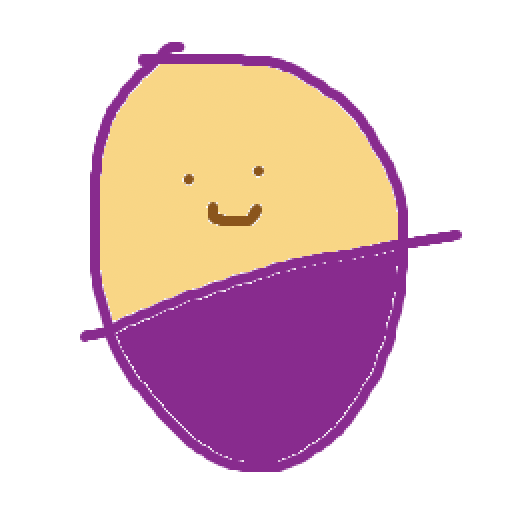[BOJ]1012 유기농 배추🥬 (java,kotlin)
❔문제❔
🙌Solution(java)🙌
- 요즘 이런 부류의 문제를 많이 마주치는데, 많이 보다 보니 이제 처음보다는 좀 덜 겁먹는 느낌이다. 역시 꾸준히 많이 풀어보는게 답인것같다!🙂
- 어쨌든 이문제를 처음 딱 봤을때 dfs로 풀면 되겠다고 생각했다.
- 배추밭을 배열로 만들고 빈곳을 0 배추를 1로 표현한 후 dfs를 통해 센곳은 2로 값을 바꾸어 마킹했다.
- dfs는 시작점 x,y를 기준으로 상하좌우로 재귀를 돌았다.
- 이번에는 저번 문제에서 알게된 출력 방법인 StringBuilder를 사용해 출력속도를 높여보았다.
import java.io.BufferedReader;
import java.io.IOException;
import java.io.InputStreamReader;
public class Main {
static int[][] field;
static int count=0;
static int m=0;
static int n=0;
public static void main(String[] args) throws IOException {
BufferedReader br=new BufferedReader(new InputStreamReader(System.in));
int test_case=Integer.parseInt(br.readLine());
StringBuilder builder=new StringBuilder();
for(int T=0;T<test_case;T++){
count=0;
String[] input= br.readLine().split(" ");
m=Integer.parseInt(input[0]);
n=Integer.parseInt(input[1]);
int cabbageCount=Integer.parseInt(input[2]);
field=new int[m][n];
for(int i=0;i<cabbageCount;i++){
String[] pos=br.readLine().split(" ");
int x=Integer.parseInt(pos[0]);
int y=Integer.parseInt(pos[1]);
field[x][y]=1;
}
for(int i=0;i<m;i++){
for(int j=0;j<n;j++){
if(field[i][j]==1) {
count++;
dfs(i,j);
}
}
}
builder.append(count+"\n");
}
System.out.print(builder);
}
static void dfs(int x, int y){
field[x][y]=2;
if(x>0&&field[x-1][y]==1){
dfs(x-1,y);
}
if(y>0&&field[x][y-1]==1){
dfs(x,y-1);
}
if(x<m-1&&field[x+1][y]==1){
dfs(x+1,y);
}
if(y<n-1&&field[x][y+1]==1){
dfs(x,y+1);
}
}
}
🔠Language Change (kotlin)🔠
import java.io.BufferedReader
import java.io.InputStreamReader
private var field= mutableListOf<MutableList<Int>>()
private var count=0
private var M=0
private var N=0
fun main(){
val br= BufferedReader(InputStreamReader(System.`in`))
val builder=StringBuilder()
val testCase=br.readLine().toInt()
for(T in 0 until testCase){
count=0;
val (m,n,cabbageCount)= br.readLine().split(" ").map{it.toInt()}
M=m
N=n
field= MutableList(m){MutableList(n){0} }
for(i in 0 until cabbageCount){
val (x,y)=br.readLine().split(" ").map{it.toInt()}
field[x][y]=1
}
for(i in 0 until m){
for(j in 0 until n){
if(field[i][j]==1){
count++
dfs(i,j)
}
}
}
builder.append("$count\n")
}
print(builder)
}
fun dfs(x:Int,y:Int){
field[x][y]=2
if(x>0&&field[x-1][y]==1)dfs(x-1,y)
if(x<M-1&&field[x+1][y]==1)dfs(x+1,y)
if(y>0&&field[x][y-1]==1)dfs(x,y-1)
if(y<N-1&&field[x][y+1]==1)dfs(x,y+1)
}
🚀Advanced🚀
- 알고 보니 이런 유형의 탐색 문제는 bfs로도 풀 수 있었다!
- bfs는 구현 해 본지 좀 돼서 연습할 겸 자바로만 다시 짜봤다.
-
결론적으로 bfs가 실행 시간은 같았지만 재귀를 하지 않아서 메모리를 조금덜 사용했다.
구분 DFS BFS 시간(ms) 192 192 메모리(KB) 18012 17448 - bfs를 구현할 때
스택큐를 사용하면 된다는게 기억이 안 나서 좀 헤맸다.
다음에는 잘 기억해서 빠릿빠릿하게 풀어보자!⚡
+) 이때는 스택인줄 알고 스택으로 풀었는데 뭔가 운이 좋았나보다..ㅎ +) 어쨌든 BFS는 큐다!! 스택이 아니라 큐!!!
import java.io.BufferedReader;
import java.io.IOException;
import java.io.InputStreamReader;
import java.util.Stack;
public class Main {
static int[][] field;
static int count=0;
static int m=0;
static int n=0;
public static void main(String[] args) throws IOException {
BufferedReader br=new BufferedReader(new InputStreamReader(System.in));
int test_case=Integer.parseInt(br.readLine());
StringBuilder builder=new StringBuilder();
for(int T=0;T<test_case;T++){
count=0;
String[] input= br.readLine().split(" ");
m=Integer.parseInt(input[0]);
n=Integer.parseInt(input[1]);
int cabbageCount=Integer.parseInt(input[2]);
field=new int[m][n];
for(int i=0;i<cabbageCount;i++){
String[] pos=br.readLine().split(" ");
int x=Integer.parseInt(pos[0]);
int y=Integer.parseInt(pos[1]);
field[x][y]=1;
}
for(int i=0;i<m;i++){
for(int j=0;j<n;j++){
if(field[i][j]==1) {
count++;
//dfs(i,j);
bfs(i,j);
}
}
}
builder.append(count+"\n");
}
System.out.print(builder);
}
static void bfs(int startX, int startY){
//확인한 노드를 담아둘 스택
Stack<int[]> stack= new Stack<>();
field[startX][startY]=2;
stack.push(new int[]{startX,startY});
int x=startX;
int y=startY;
while(!stack.empty()){
if(x>0&&field[x-1][y]==1){
stack.push(new int[]{x-1,y});
field[x-1][y]=2;
}
if(x<m-1&&field[x+1][y]==1){
stack.push(new int[]{x+1,y});
field[x+1][y]=2;
}
if(y>0&&field[x][y-1]==1){
stack.push(new int[]{x,y-1});
field[x][y-1]=2;
}
if(y<n-1&&field[x][y+1]==1){
stack.push(new int[]{x,y+1});
field[x][y+1]=2;
}
int[] next=stack.pop();
x=next[0];
y=next[1];
}
}
}

댓글남기기